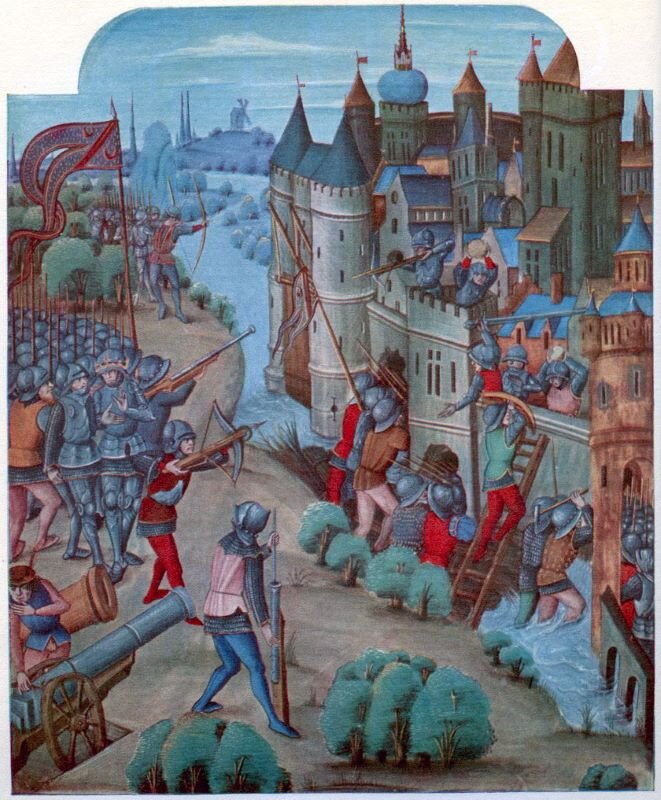May 14th 1471: Another Lancastrian Disaster A siege of the fifteenth century, from a manuscript belonging to Edward IV The Chronicle of London described the preparations made by John Stockton, the Mayor: The Mayor, which long before had kept day watch and night watch had garnished every place of the city where any peril should be with guns and other defences of war and made so strong bulwarks at every gate… and over that appointed certain aldermen with a competent number of prudent commoners to watch the said gates and other places both by day and by night, and agreed with the lieutenant of the Tower that if they came unto Aldgate that he should with his company issue out at the postern and set upon them… Fauconberg was aware that Edward’s troops could arrive at any time and prepared for what was going to be the serious attack. He took the guns off his ships and ranged them along the south bank, opening the assault with ‘shot of gun’. The city guns fired back, though, to greater effect against the unprotected rebels, who were eventually forced to abandon their positions. The main attack started at eleven o’clock, with another attempt at crossing London Bridge and simultaneous assaults on Aldgate and Bishopsgate, these latter being led by captains called Spysyng and Quyntyn. The attack on the bridge was frustrated by the large gap at the drawbridge, and after burning more buildings on the south side of the bridge there was little that could be done. Crowded into the narrow roadway the troops were sitting targets for the city’s guns, shot through the holes cut in the drawbridge. North of the river, the Kentish men were joined by Essex men in a co-ordinated attack on the gates. Realising that time was short, the attack was reckless and frustrated by the precautions taken by the Mayor. The Aldgate was the most threatened, with the outworks on fire and the citizens living in the suburb forced to retreat through the gate, which was being determinedly attacked, to little effect: ‘Then was mighty shot of hand-guns and sharp shot of arrows which did more scathe to the portcullis and to the stone work of the gate than to any enemies on either side’ The attackers fell for a risky move on the part of the defenders, who raised the portcullis, allowing the rebels crowding outside to rush in. The portcullis was dropped again once the first wave had entered. They were set upon by the city forces. Then a trumpet was blown, the portcullis lifted again and the defenders rushed out, putting the rebels outside to flight. This attack was joined by the garrison of the tower, issuing out of a postern gate and attacking from the rear. The Earl of Essex attacked out of Bishopsgate, completing the discomfiture of Fauconberg’s men, who were chased back to Mile End and eventually as far as Stratford. They fared no better south of the river where Sir Ralph Josselyn led a charge against the rebels, many of whom died trying to board their ships. All in all, at least 300 men were killed, which made this a significant battle. Fauconberg withdrew his army to Blackheath and sent his ships back to Sandwich. It had been a disastrous day for him. |
Friday, 14 May 2021
1471 - the assault on London repulsed
The Tewkesbury Battlefield Society today continues the story of the Bastard of Falconberg’s attempt to seize London for the Lancastrian cause:

No comments:
Post a Comment